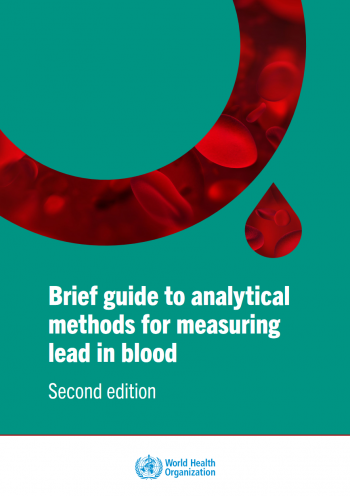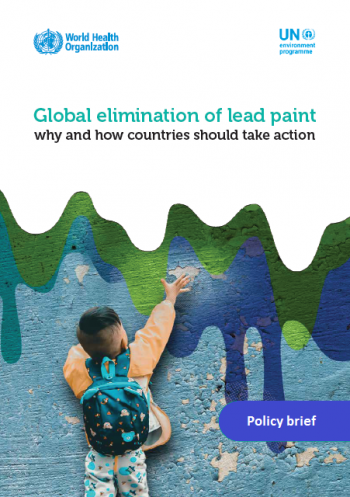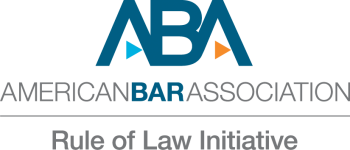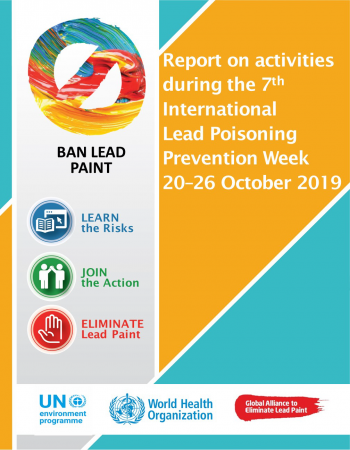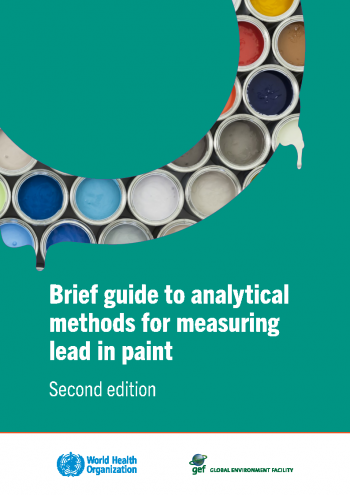Library
Recently Added
-
Rotterdam Convention Committee Recommends Informed Consent Procedure for Trade in Two Chemicals
-
Brief guide to analytical methods for measuring lead in blood (Second edition)
Lead is a toxic metal whose widespread use has caused extensive environmental contamination and health problems in many parts of the world.... Read More -
Gender mainstreaming in chemicals and waste policies
New Fact Sheet: Gender mainstreaming in chemicals and waste policies
Gender equality is a core human rights and development issue, as... Read More
-
Working Group Pushes Forward on Guidelines for Plastics, POPs, Incineration
Read More
-
Community of Practice Addresses Links Between Gender and Chemicals
-
Global Observatory Tracks Lead Paint Legislation, Health-related SDG Targets
-
Infographics on Highly Hazardous Pesticides
It's time to regulate Highly Hazardous Pesticides!
It won’t compromise agriculture, but it will save lives.
This document was... Read More
-
Global elimination of lead paint: why and how countries should take action - Policy brief
Lead has toxic effects on almost all body systems and is especially harmful for children and pregnant women. Lead paint is an avoidable source... Read More
-
Global elimination of lead paint: why and how countries should take action - Technical brief
This document has been developed for officials in government who have a role in regulating lead paint, to provide them with concise technical... Read More
-
Colombia Limits Lead Paint in Children’s Items
-
Experts Emphasize Private Sector's Role in Combating Marine Litter
-
Study of the Paint Market in Colombia (Draft / Spanish only)
Las pinturas se han convertido en parte esencial del estilo de vida de la sociedad moderna, el color de ellas es apetecido por sus funciones... Read More
-
Suggested Considerations for Legal Drafting Process (Draft)
In response to questions received by the Global Lead Paint Alliance (GLPA) on roadmaps for developing regulations on lead content in paint, the... Read More
-
Report of the 2019 International Lead poisoning Prevention Week
From 20 to 26 October 2019 the seventh International Lead Poisoning Prevention Week of action (ILPPW) took place in countries around the world.... Read More
-
The Toxic Truth
A new report from UNICEF and Pure Earth reveals that lead poisoning is affecting children on a massive and previously unknown scale. Nearly half of these children live in South Asia. UNICEF and Pure Earth call for urgent action to abolish dangerous practices including the informal recycling of lead acid batteries, which is a leading source of childhood lead exposure. Read More -
eChemPortal: The Global Portal to Information on Chemical Substances
-
Follow-up Action on Dangerous Product Alerts in Europe Increased in 2019
-
Plastics and Chemicals of Concern In Consumer Products
Plastics are used across the economy and in diverse downstream sectors such as packaging, construction, transportation, healthcare, textiles,... Read More
-
WHO and GEF Report on Methods for Measuring Lead in Paint
-
Five Countries Collaborate to Inform Stakeholders on Endocrine Disruptors
-
Endocrine-disrupting chemicals: economic, regulatory, and policy implications
Endocrine-disrupting chemicals (EDCs) substantially cost society as a result of increases in disease and disability but—unlike other toxicant... Read More
-
Lead Paint Factsheet
This factsheet presents the work of UNEP and the Lead Paint Alliance. The document also highlights its impacts and the SAICM GEF project Lead in... Read More
-
Brief guide to analytical methods for measuring lead in paint (Second edition)
Lead is a toxic metal whose widespread use has caused extensive environmental contamination and health problems in many parts of the world.... Read More
-
Life cycle based alternatives assessment (LCAA) for chemical substitution
The world faces an increasing need to phase out harmful chemicals and design sustainable alternatives across various consumer products and industrial applications. Alternatives assessment is an emerging field focusing on identifying viable solutions to substitute harmful chemicals. However, current methods fail to consider trade-offs from human and ecosystem exposures, and from impacts associated with chemical supply chains and product life cycles. To close this gap, we propose a life cycle based alternatives assessment (LCAA) framework for consistently integrating quantitative exposure and life cycle impact estimates in the substitution process. Read More -
UNEP Science Alerts - March 2019
UNEP's newsletter from March 2020 on scientific articles, research and knowledge on selected topics. Read More
- 1 of 9
- next ›


